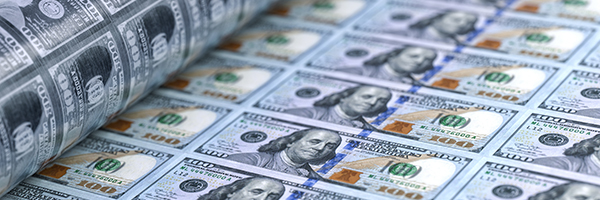According to stock market history, stock investors should be that the Federal Reserve is about to start raising interest rates. Stocks have risen at an average annualized rate of 9% during the 12 Federal Reserve interest rate increase cycles since the 1950s and delivered positive returns in 11 of those instances, Keith Lerner, Truist’s co-chief investment officer told Bloomberg.
There’s one exception. The 1972-1974 period, which coincided with the 1973-1975 recession.
Which may, unfortunately, be more applicable to the current period than all those other historical examples.
Now it actually makes sense that the period when the Federal Reserve is raising interest rates should be positive for stocks. Most of the time the Fed starts to raise rates to head off inflation that’s a result of an economy growing faster than its inflation-free speed limit.
Which means that stocks, even as the Fed is raising rates, are being buoyed in higher revenue growth and higher earnings. In essence companies in that kind of environment outgrow the Fed’s interest rate increases–until they really bite and slow growth across the economy.
But notice that this time it is different. We’re not seeing inflation that’s a result of faster than sustainable growth. Inflation this cycle is a result of disruptions in the supply chain and supply shortfalls that are a result of companies misreading how fast demand build return to pre-Pandemic levels. If I can see a macroeconomic trend, it actually points to underinvestment in supply. For example, the soaring prices of copper and lithium are a result of very impressive growth in demand and lagging investment in supply. It’s not at all clear now, in this circumstances, higher interest rates from the Federal Reserve “fix” inflation. Don’t higher interest rates discourage investment?
I also think that forecasts that point to a steady stream of interest rate increases from the Fed–a cycle that could include by some estimates as many as eight interest rate increase–are based on the model of a “normal” supply/demand cycle.
One of the problems facing companies right now is that forecasting demand is extremely tricky. How many Netflix (NFLX) subscriptions were brought forward from future growth because of the Pandemic? What really is the growth rate at Peleton Interactive (PTON) in a post-Pandemic world? How quickly will customers flock back to Disney (DIS) parks–quite rapidly I think–and will MGM Resorts International (MGM) see the same growth story in Las Vegas?>
And then, of course, there’s the evidence that existing supply shortages of things like computer chips–and new cars and consequently used cars–are going to stretch on for a while. And no one knows, exactly, how long a while might be.
My message of good cheer then–and I’m being ironic–is that financial market history, which presents a positive story now, may have very little guidance to offer us for this Federal Reserve cycle.
In a nutshell, we’ve never had a cycle of interest rate increases in a world struggling to cope with a Pandemic before.


